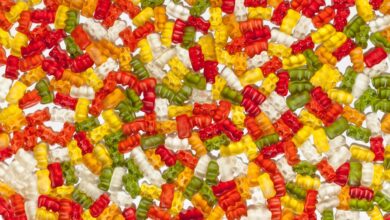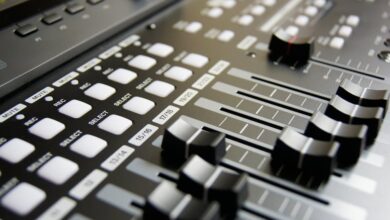Best Football Live Streaming Sites Free

Hey football fans! Are you itching to catch every game, every tackle, and every unbelievable goal this season without breaking the bank? You’re definitely not alone. Finding reliable and free live streaming sites for football can feel like searching for a needle in a haystack. But don’t worry, your friendly neighborhood sports guru is here to help you navigate the world of online football streams.
Let’s be real, cable subscriptions and pricey streaming services can put a serious dent in your wallet. That’s why so many fans are searching for free alternatives. But before we dive into some options, let’s talk about something super important: staying safe online.
Staying Safe While Streaming Football Online
Look, I get it. You want to watch the game, and you want to watch it now. But when you’re exploring free streaming sites, you need to be extra careful. Some sites are riddled with annoying ads, while others can expose you to malware or even scams. Trust me, missing a game is better than dealing with a computer virus or having your personal information stolen.
Here are a few golden rules to keep in mind:
- Use a VPN (Virtual Private Network): A VPN hides your IP address and encrypts your internet traffic, making it much harder for anyone to track your online activity. Think of it as a digital cloak of invisibility. While not a foolproof solution, it adds a crucial layer of security.
- Be wary of suspicious links and ads: If something looks too good to be true, it probably is. Avoid clicking on pop-up ads, especially those that promise “free prizes” or ask for your personal information.
- Install an ad blocker: Ad blockers can significantly reduce the number of annoying and potentially harmful ads you encounter on streaming sites.
- Keep your antivirus software up to date: Make sure your antivirus software is running and has the latest updates. This will help protect you from malware and other threats.
- Don’t download anything from the site: Never download anything from a free streaming site, unless you are 100% sure it is safe. This includes video players, codecs, or anything else the site might try to trick you into downloading.
Okay, safety briefing over! Let’s move on to some options for watching football online for free (or at least, relatively free).
Exploring Your Options for Free Football Streams
It’s important to understand that “free” often comes with compromises. You might encounter lower video quality, annoying ads, or occasional buffering. But if you’re willing to put up with a few minor inconveniences, you can definitely find some ways to watch football without spending a fortune.
Here are some general categories of options to consider:
- Sports Streaming Websites: Many websites aggregate live sports streams from various sources. These sites often offer a wide range of football games, including both professional and college leagues. Remember to use a VPN and ad blocker when using these sites. The quality can vary wildly, and availability isn’t always guaranteed.
- Social Media Platforms: Believe it or not, sometimes you can find live streams of football games on social media platforms like YouTube, Facebook, or Twitter (X). These streams are often unofficial and may be taken down at any time, but they can be a good option in a pinch. Search for the game you want to watch and filter by “live.”
- Free Trials of Streaming Services: Many legitimate streaming services offer free trials. You can sign up for a free trial to watch a specific game or event, and then cancel your subscription before you’re charged. Just remember to set a reminder to cancel! This is often the highest-quality, safest method, but it’s a temporary solution.
- Over-the-Air Broadcasts: Don’t forget about the old-fashioned way! If you have a good antenna, you can often pick up local broadcast channels that may be showing football games. This is a completely legal and free option, but your channel selection will be limited.
Potential Downsides of Free Streaming Sites
While the allure of free football is strong, it’s vital to be aware of the downsides. I’ve touched on some already, but let’s reiterate. Free streaming sites often generate revenue through advertising, and those ads can be intrusive and potentially malicious. You might encounter pop-up ads, banner ads that cover the screen, or even ads that redirect you to other websites.
Another issue is the reliability of the streams. Free streams are often hosted on servers that are not designed to handle a large number of viewers. This can lead to buffering, lag, and poor video quality. You might spend more time waiting for the stream to load than actually watching the game!
Finally, it’s important to be aware that some free streaming sites may be operating illegally. Streaming copyrighted content without permission is against the law, and you could potentially face legal consequences for using these sites (though this is rare for individual viewers).
A Word About Legal Streaming Options
Okay, I know you came here looking for *free* options, but hear me out. It’s worth considering legitimate streaming services, even if they cost a bit. They offer a much better viewing experience, with higher video quality, fewer ads, and more reliable streams. Plus, you can feel good knowing that you’re supporting the content creators and the leagues.
Services like ESPN+, Paramount+, Peacock, and fuboTV all offer live football games. They often have different games, so check which one has the games you want to watch. Sometimes, combining one of these with an antenna for local games is the best solution.
Frequently Asked Questions
Are free football streaming sites legal?
It depends. Streaming copyrighted content without permission is illegal. Some sites operate in a legal gray area, while others are clearly violating copyright laws. Using these sites could potentially expose you to legal risks, although this is uncommon for individual viewers.
What are the risks of using free streaming sites?
The risks include exposure to malware, viruses, and scams. You might also encounter intrusive ads and unreliable streams. It’s important to use a VPN, ad blocker, and antivirus software to protect yourself.
How can I improve the quality of a free football stream?
Close any unnecessary applications on your computer or device. Make sure you have a stable internet connection. Try using a different browser or streaming site. Sometimes, lowering the video quality can also help.
What are some alternatives to free streaming sites?
Alternatives include subscribing to a legitimate streaming service, using a free trial, or watching over-the-air broadcasts with an antenna.
Can I watch football on my phone or tablet?
Yes, most streaming sites and services have mobile apps or mobile-friendly websites that you can use to watch football on your phone or tablet.
So, there you have it: a guide to navigating the sometimes-treacherous waters of free football streaming sites. Remember to prioritize your safety, be prepared for compromises, and consider legitimate alternatives if possible. With a little bit of luck and a lot of caution, you can enjoy all the thrills of football season without emptying your wallet. Now get out there and cheer on your favorite team!



